Francesca Maria Toma
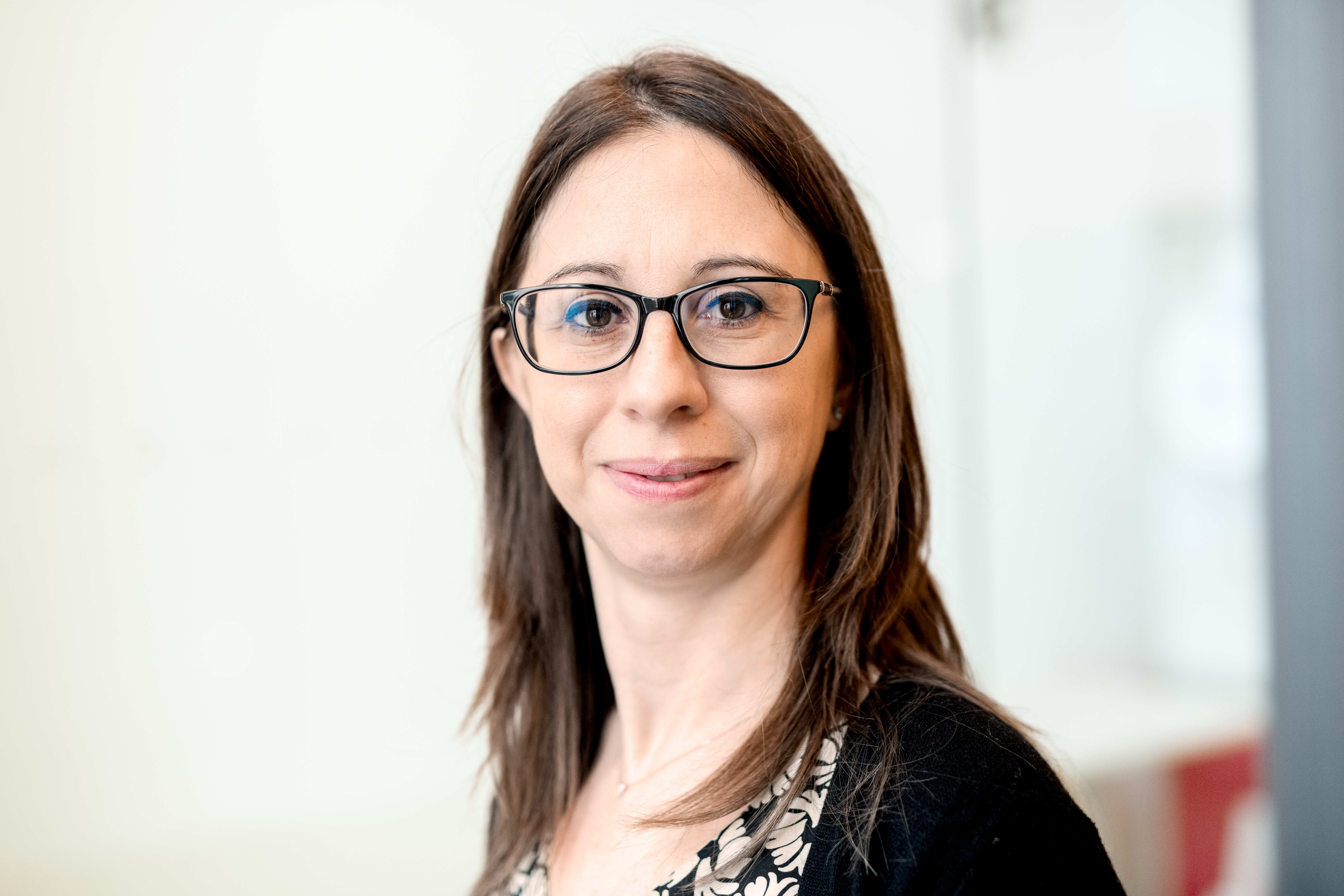
Institute's Director, Helmholtz Zentrum Hereon, Teltow, Germany
Professor, Helmholtz Zentrum Hereon and Helmuth Schmidt University, Hamburg, Germany
Visiting Professor, Lawrence Berkeley National Laboratory
Understanding selectivity and stability challenges through microenvironment control and advanced characterization in solar fuel production
Artificial photosynthesis is a promising approach for achieving carbon-neutral energy systems. The hydrogen evolution reaction (HER) and photoelectrochemical CO2 reduction have attracted significant attention for their potential to store solar energy in fuels and chemicals while closing the carbon cycle. However, catalyst and photoelectrode materials often suffer from instability and insufficient activity or selectivity in CO2 reduction. Addressing these limitations requires a deep understanding of the physicochemical and structural changes that occur under operational conditions, enabled by advanced characterization techniques.
In this work, we first present a suite of complementary characterization methods applicable to both catalysts and photoelectrodes. We then demonstrate how insights into the catalytic microenvironment and the parameters influencing catalytic activity can guide the development of integrated photocathodes. We explore a range of material systems, including metal oxides, silicon, and halide perovskites, and show how our bespoke design strategy for integrated systems enables the sustained production of targeted reaction products.
Website: Francesca Toma
Smaranda Marinescu
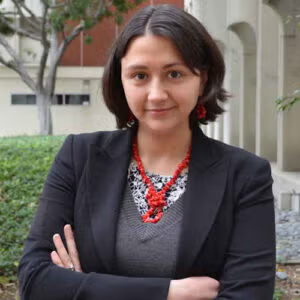
Professor, University of Southern California, USA
Biologically Inspired Phosphinothiolate Systems for Small Molecule Activationz
Research in the Marinescu group focuses on the development of novel catalytic systems for efficient solar-to-fuel technologies. Inspired by biological systems, we design molecular catalysts that involve hydrogen bonding networks capable of small molecule activation through multiple proton and electron transfers. Electrochemical conversion of CO2 to value-added products serves as an attractive method to store renewable energy as energy-dense fuels. Selectivity in this type of conversion can be limited, often leading to the formation of side products such as H2. We have shown that in the presence of H2O as the exogenous proton source, [Co(triphos)(bdt)]+ catalyzes the selective reduction of CO2 to formate with excellent selectivity (Faradaic efficiencies up to 94%). The catalyst displays robust stability, with 8 and 24 hour controlled potential electrolysis experiments displaying negligible reduction in current and no evidence of degradation deposition on the electrode during electrolysis. Chemical reduction studies of [Co(triphos)(bdt)]+ indicate that deligation of the apical phosphine likely occurs before catalysis. A mechanism is proposed to occur through a hydride transfer pathway, and DFT calculations indicate an additional reduction of [Co(triphos)(bdt)(H)]0 to [Co(triphos)(bdt)(H)]- is necessary for turnover, suggesting an overall ECEC mechanism.
Website: Smaranda Marinescu
Elizabeth Gibson

Professor, Chemistry, Natural and Environmental Science, Newcastle University, Durham, United Kingdom
Electrode interface optimization for photoelectrochemical water splitting and conversion of CO2 to fuels and feedstocks
Photoelectrocatalytic devices offer new opportunities for converting sunlight into storable energy cheaply and sustainably.[1] We are developing photocathodes for light-driven reduction of carbon dioxide or water to high energy and value products (solar chemicals) using the lessons we have learnt from solar cells.[2],[3] This strategy combines the selectivity of a molecular or colloidal catalyst with the charge transport properties of inorganic semiconductors in a robust device. When photoelectrodes are assembled in a tandem configuration, the electrons released in water oxidation at the photoanode can be consumed by the photocathode in the reduction of e.g. H+ to H2 or CO2 to CO. Generating hydrogen on one electrode and oxygen on another enables the two gasses to be collected separately. The device performance can be optimised by tuning the properties of the individual components responsible for light absorption, charge transport and catalysis, rather than relying on one material to have all the necessary credentials. Highlights from recent work examining charge-transfer at the interfaces between the photocathode and and photocatalyst on the surface using transient absorption spectroscopy and time-resolved infrared spectroscopy will be presented. We will show how we are optimizing the interface between the electrode and electrolyte to improve stability.[4] Finally, recent work on biohybrid systems which blend the ability to selectively form multi-carbon products from CO2 using microbial systems, with the strong light absorption characteristics of semiconductor electrodes.
Website: Elizabeth Gibson
Jenny Y. Yang

Professor, University of California, Irvine, USA
Selective Reduction of CO2 to Formate and Beyond
CO2 hydrogenation to formate often proceeds through transition metal hydride intermediates. The decreasing cost of solar electricity has prompted exploration into electrochemical generation of transition metal hydrides for CO2 reduction. A complicating factor arises from the fact that protons are necessary to generate transition metal hydrides but can also lead to competitive hydrogen formation, lowering the Faradaic yield for CO2 reduction. The use of hydricity, or the heterolytic bond cleavage energy of a metal hydride, can be used to determine conditions in which competitive H2 evolution is suppressed. Other strategies to move past 2 electron products will also be discussed.
Website: Jenny Y. Yang
Aleksandra Vojvodic
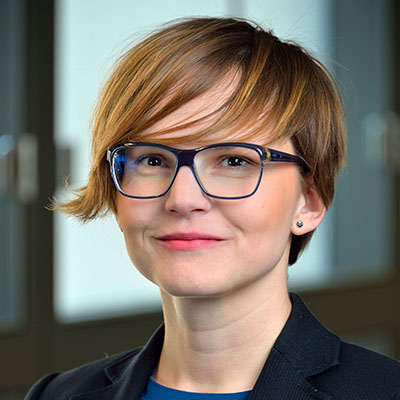
Rosenbluth Associate Professor, University of Pennsylvania, Philadelphia, Pennsylvania, USA
Facetted Chemistry of Earth-Abundant Nanostructured Materials
Systematic computational materials modeling strategies using first-principles methods allow one to describe and understand chemistries of already known materials, and, importantly, they can be used to predict new materials and their chemistries through a careful analysis of the surface chemistry at the atomic level. In this talk, I will discuss our efforts to model chemistries of relevance for a green hydrogen economy using earth-abundant materials including transition metal carbides, nitrides and oxides. Specifically, I will demonstrate how we have been able to computationally predict a) 2D MXene catalysts for electrochemical hydrogen production, b) 2D MXene materials for hydrogen storage, and c) oxide nanoparticles for the oxygen evolution reaction (OER). Throughout the talk, I will pinpoint the unique chemistries and catalysis taking place at the interfaces by emphasizing the role of nano-structuring, dimensionality, under-coordination and surface to name few. I will conclude by discussing some outstanding challenges and opportunities for the modeling of solid-liquid interfaces.
Website: Aleksandra Vojvodic
Inke Siewert
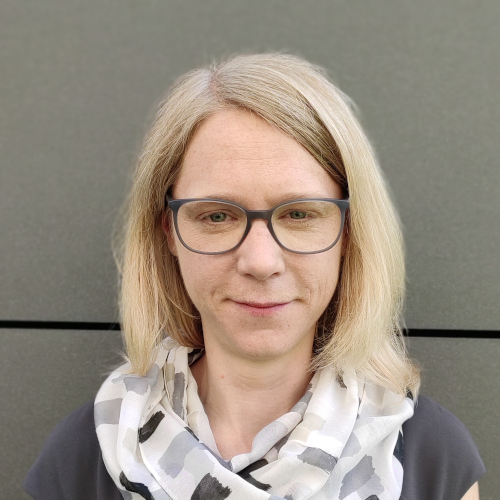
Professor, Georg-August-Universitat Göttingen, Göttingenz, NDS, Germany
Hydride ion transfer reagents – from fundamentals to application in CO2 electrocatalysis and beyond
Hydride ion transfer reactions are fundamental for functional group transformations in chemical synthesis and chemical energy storage applications. Mediated hydride transfer reactions can proceed in a concerted two-electron, proton-coupled fashion thereby circumventing the formation of high energy intermediates. Noble metal hydride complexes are generally excellent hydride donors and can be used in catalytic amounts in thermal hydrogenation protocols. However, due to the low abundance of noble metal-based hydrides, recent scientific efforts have shifted to base-metal and metal-free hydride donor reagents and their utilization in photo/electrocatalytic reduction processes.
In an electrocatalytic application, the conjugated reagent must be (re)generated by consecutive single electron transfer and protonation steps, which is sometimes challenging. Electrochemical 1e–-reduction can produce highly reactive radical intermediates, which have a strong tendency to e.g. dimerize instead of undergoing the desired 1H+/1e− follow-up reactivity. I will present the electrochemical formation of base-metal and metal-free hydride donor reagents for storing multiple electrons and protons focusing of the distinct differences and similarities in their formation and reactivity. Furthermore the application of such hydride transfer reagents in the electrochemical hydrogenation of C=O bonds in CO2 and beyond will be presented.
Website: Inke Siewert
Jillian Dempsey
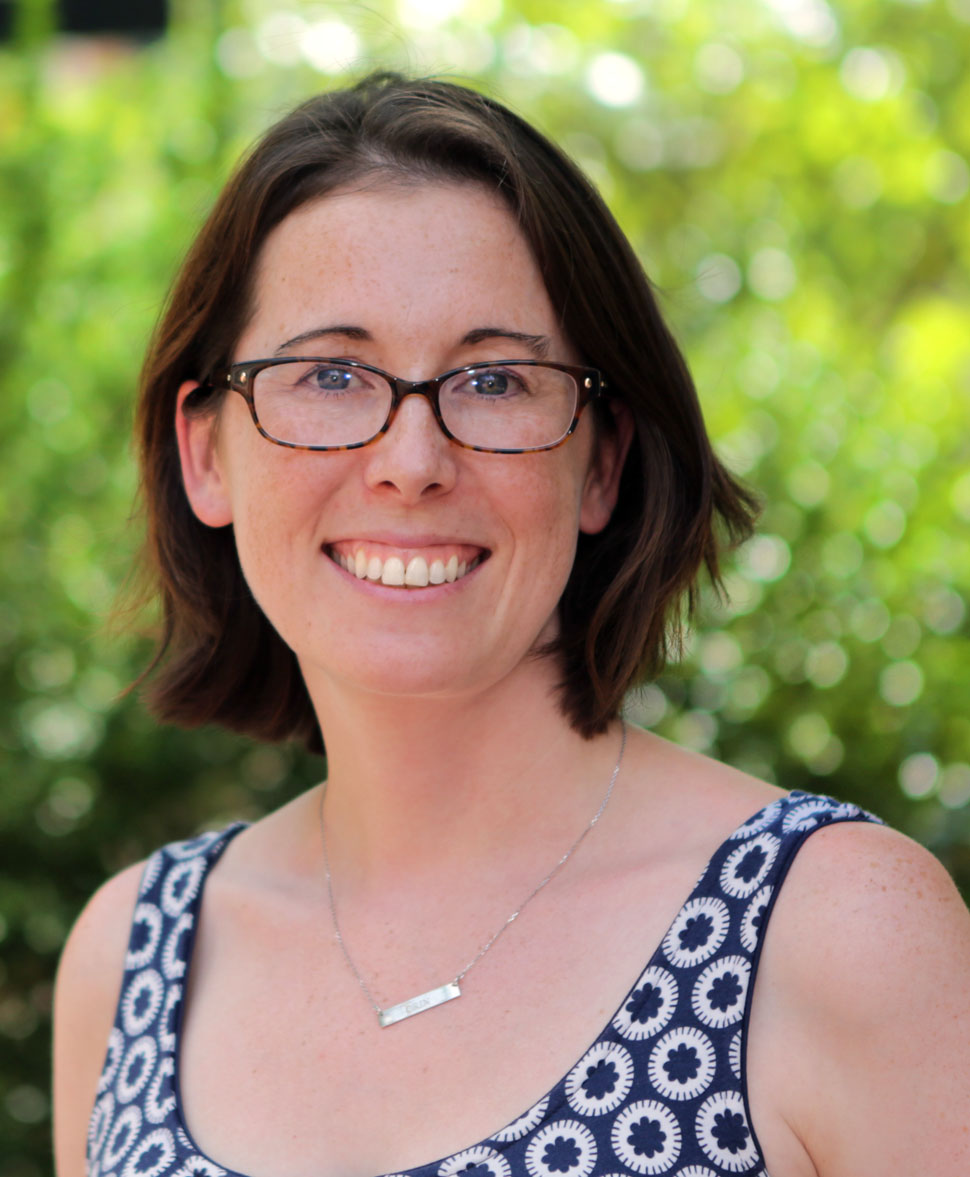
Professor, University of North Calorina at Chapel Hill, USA
Optimizing silicon-catalyst interfaces for hybrid photoelectrodes
Coatings and termination strategies for silicon photoelectrodes are crucial to protect the semiconductor from detrimental and uncontrolled oxidation during photoelectrochemical reactions that produce chemicals and fuels. It is important to ensure that these modifications do not inhibit interfacial charge transfer to fuel-producing catalysts and mediators. Terminating the silicon lattice with organic moieties affords stable photoelectrodes that exhibit large photovoltages. Methyl-terminated silicon has been demonstrated to drive the reduction of CO2 by molecular catalysts without the competitive hydrogen evolution observed for H-terminated electrodes. When the silicon is instead coated with a silicon oxide generated through a rapid thermal annealing step, stability and large photovoltages are also achievable. The proton-coupled electron transfer reduction of benzimidazolium to a dihydrobenzimidazole organohydride species proceeds with minimal parasitic reduction of protons to dihydrogen on these thermal oxide-coated silicon. These studies provide key foundations for hybrid photoelectrodes that drive fuel production with sunlight.
Website: Jillian Dempsey
Li-Zhu Wu
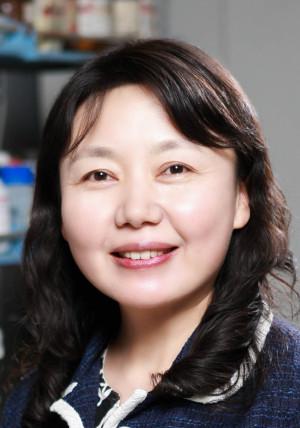
Professor, Technical Institute of Physics and Chemistry, Chinese Academy of Sciences, Beijing 100190, China
Artificial Photosynthesis for Chemical Transformation
With the increasing concern over the global energy crisis and the greenhouse effect caused by carbon dioxide emission, the development of carbon-neutral and renewable-energy solutions has attracted considerable interest in both the scientific and industrial communities. Nature long ago figured out how to use photosynthetic complex to capture sunlight and then to store its energy in a chemical form. Artificial photosynthesis is the idea that one might be able to create energy and other useful thing from sunlight, water and carbon dioxide, as plants do. Inspired by the ability of natural photosynthesis to convert solar energy into chemical energy, the scientific community recognized the potential of light-driven reactions (photochemistry) as a powerful approach to chemical synthesis. From the high energy intermediate generated by photoinduced excitation of organic molecules, unique reaction manifolds can be accesses that are generally unavailable to conventional thermal pathways. Thus photochemical reactions considerably enrich the synthetic repertoire of modern organic chemists. Our group has long engaged in the photochemistry research related to the photoinduced energy transfer, electron transfer and chemical transformation, including artificial photosynthesis, visible light catalysis for organic transformation, and photoinduced electron transfer, energy transfer and chemical reactions in supramolecular systems. In this presentation, we will compile several stories to illustrate photochemical approaches that may be useful in the design of artificial photosynthetic systems for effective chemical transformation. With these joint efforts, artificial photosynthesis will not only match and even outcompete the quantum efficiency, chemo-selectivity, regio-selectivity, stereo-selectivity, and scalability of natural photosynthesis, but also offer energy-economic, step-economic, carbon-neutral, and value-added solutions for sustainable chemical manufacturing in the next few decades.
Website: Li-Zhu Wu
Alexander Simonov
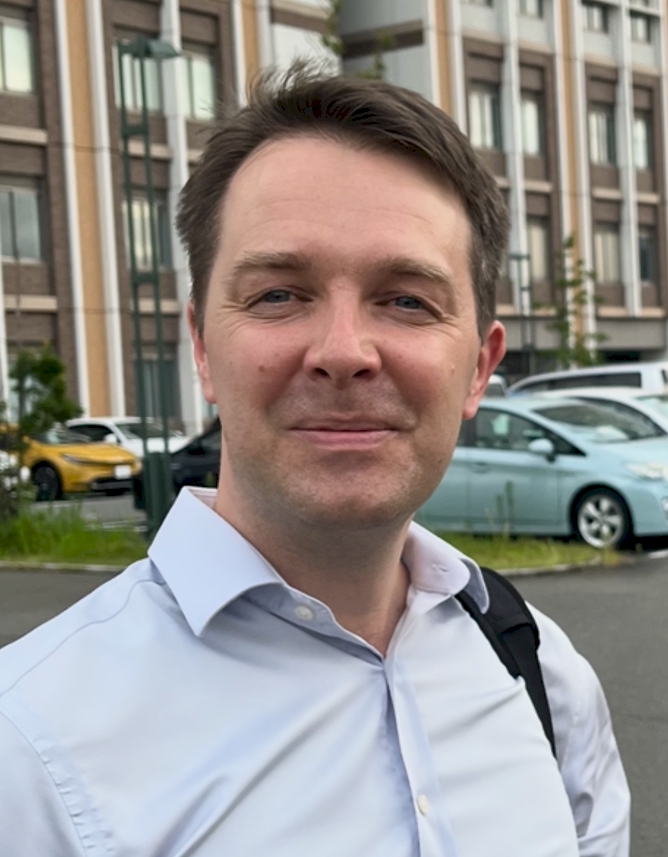
Professor, Monash University, Australia
The complicated chemistry of the redox-mediated nitrogen reduction reaction
Over only ~5 years of intense research, the lithium redox-mediated nitrogen reduction reaction (Li-NRR) has transformed from an essentially forgotten, low-productivity process into the current most promising method for the sustainable electrosynthesis of green ammonia. Indeed, practical NH3 yield rates up to 1 μmol s-1 cm-2, faradaic efficiencies close to 100% and robust electrosynthesis of ammonia from N2 and H2 on a timescale of weeks all have been achieved on this very short timescale. However, substantial research and development efforts are still required to translate the redox-mediated NRR into a technology of applied significance. To achieve this, much deeper understanding of the mechanism of the process and of the factors affecting the productivity, selectivity and durability of the Li-NRR is needed. Towards this aim, we have been developing new electrolyte and electrode formulations, and systematically studied the reaction kinetics as well as transformations within the system using ex situ and in situ spectroscopic methods to further our understanding of the fundamental principles of the Li-NRR. The methods involved in this work include wall tube electrode, online NMR, in situ X-ray radiography, in situ neutron reflectometry as well as a set of conventional ex situ physical characterisation techniques. The talk will present the outcomes of these studies and will summarise our recent progress in establishing the factors defining the performance of the lithium-redox mediated ammonia electrosynthesis.
Website: Alexander Simonov
Maurizio Prato
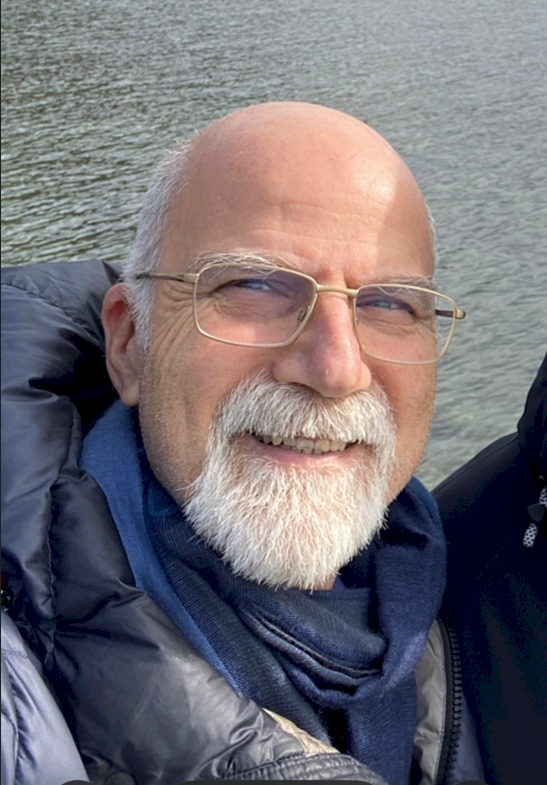
Ikerbasque Professor, CIC biomagune, Spain
Multifunctional hybrid interfaces for energy applications
Among the most innovative strategies in the energy transition, photo-electrocatalytic splitting of water for the production of "green hydrogen" plays a key role, as it provides an ideal energy carrier, obtained from renewable and circular resources and whose production and combustion fuels the H2O/O2 cycle, activated by sunlight. Currently, hydrogen production is mainly obtained from fossil sources, and in particular from natural gas, through thermochemical processes (reforming/pyrolysis) that generate quantities of carbon dioxide with high environmental impact. The perfect mechanisms of the leaf, realized in an artificial environment, allows for the production of hydrogen as a solar fuel, an ideal solution for sustainable development. In particular, a new catalytic system, based on the combination of perylene bisimides and polyoxometalates, arranged in a hierarchical assembly, offers new opportunities for the biomimetic splitting of water.
Website: Maurizio Prato
Ally Aukauloo
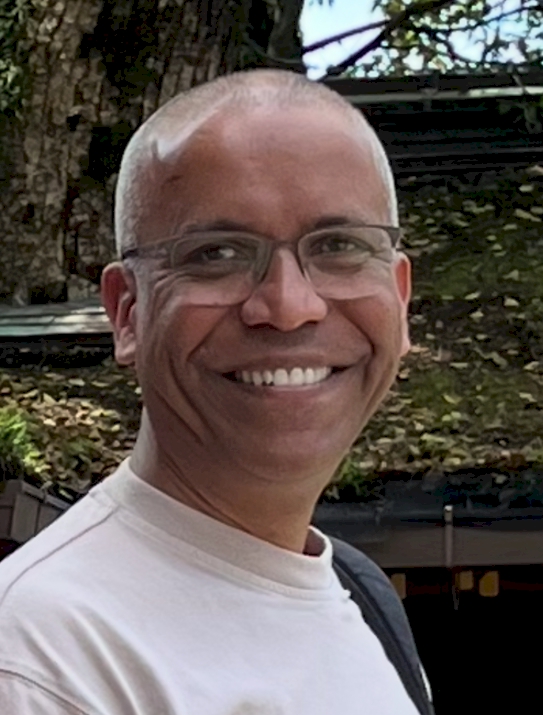
Professor, ICMMO, Universite Paris-Saclay, I2BC CEA Saclay
Porphyrins and Phthalocyanines as Modules for Artificial Photosynthesis
We develop metalloporphyrins and metallo phthalocyanins to replicate the different events in natural photosynthesis:
• Light induced electron transfer models of P680-TyrZ, we have developed a fused imidazole-phenol with a phthalocyanine as a model for the latest discovery of chlorophyll f driven photosynthesis ay 727 nm.
• For the CO2 reduction, we build on results in the literature to enhance the catalytic efficiency of metallophyrins and metallophthalocyanines by embarking chemical functions to develop multipoint hydrogen bonds, electrostatic interaction and designed bimetallic complexes.
• Porphyrins are known to stabilize highly oxidized metal oxo species. We have designed mononuclear and dinuclear metalloporphyrins that can activate and oxidize water.
References
[1] J. Follana-Berná et al. Angewandte Chemie International Edition, 2021, 60, 12284-12288
[2] J. Patel et al. Chem. Sci., 2020, DOI: 10.1039/D0SC02122A
[3] X. Yuan et al. Small, 2024, 10.1002/smll.202407364
[2] P. Gotico et al. Angewandte Chemie International Edition, 2019, 58, 4504-4509
[3] P. Gotico et al. Angewandte Chemie International Edition, 2020, 59, 22451-22455.
[4] C. Zhang et al. Angewandte Chemie International Edition, 2023, 62, e20221466.
Website: Ally Aukauloo
David Tilley

Professor, Department of Chemistry, University of Zurich, Winterthurerstrasse 190 CH-8057 Zurich, Switzerland
Heterogenization of molecular catalysts on electrode surfaces via supramolecular host–guest interactions
I will present our recent work on immobilization of molecular catalysts via host–guest complexation on electrode surfaces. The electrode surface is modified with a molecular “host” molecule, such as a cyclodextrin, and a suitably derivatized molecular catalyst (e.g., incorporating a naphthyl- or adamantyl- group) acts as the “guest”. While such host–guest binding interactions are dynamic in solution phase, the binding is remarkably stable upon immobilization on electrode surfaces. Derivatives of beta-cyclodextrin featuring thiol or phosphonate groups are suitable for binding to gold and conductive oxide electrodes, respectively. Moreover, underivatized pillar[6]arene exhibits stable binding to indium tin oxide (ITO) conductive electrodes. Using a variety of novel molecular catalysts, I will discuss the power and limitations of this approach to drive a variety of chemical reactions such as ammonia oxidation and the oxidation of biomass-derived compounds towards value added chemicals. Finally, I will discuss the nature of the interaction between host–guest surface-anchored molecular catalysts and the electrode (i.e., whether it behaves more like a molecule or more like a heterogeneous catalyst) as revealed by surface enhanced infrared absorption spectroscopy.
1. Roithmeyer, H. et al. Angew. Chem. Int. Ed. 2024. https://doi.org/10.1002/anie.202413144.
2. Roithmeyer, H. et al. J. Am. Chem. Soc. 2024, 146 (1), 430–436. http://doi.org/10.1021/jacs.3c09725.
3. Sevéry, L. et al. Nature Chemistry, 2021, 13, 523–529. http://doi.org/10.1038/s41557-021-00652-y.
Website: David Tilley
Kazunari Domen
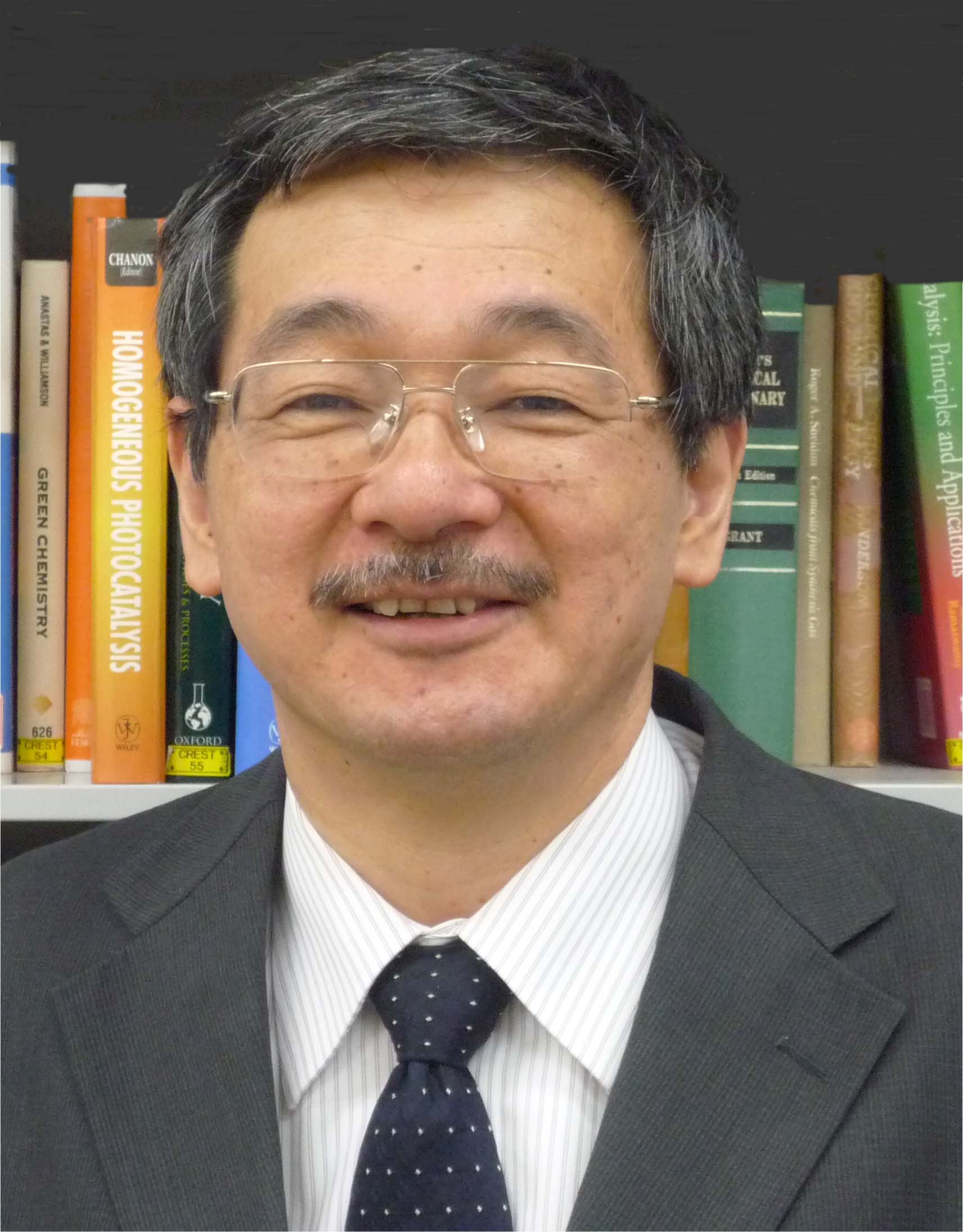
Professor, The University of Tokyo, Japan
Development of efficient photocatalysts for water splitting
Photocatalytic overall water splitting (OWS) is of growing interest as a means of producing green H2.1 To achieve a solar-to-hydrogen energy conversion efficiency (STH efficiency) sufficient for practical application, it is essential to extend the absorption edge wavelength of photocatalysts to longer wavelengths and dramatically improve the apparent quantum efficiency (AQY), as well as to effectively immobilize particulate photocatalysts. In my talk, recent advances and challenges in photocatalytic materials for water splitting will be discussed.
The author’s group has studied various oxides, (oxy)nitrides, and oxysulfides as photocatalysts for OWS. Recently, the AQY of SrTiO3 in OWS has reached more than 90% at 365 nm by refining the preparation conditions of the photocatalyst and cocatalysts.2 In addition, photocatalyst sheets consisting of La- and Rh-codoped SrTiO3 as a H2 evolution photocatalyst (HEP) and Mo-doped BiVO4 as an O2 evolution photocatalyst (OEP) immobilized on Au or C thin film has been shown to drive Z-scheme OWS with STH efficiencies exceeding 1%.3,4 However, the photocatalysts capable of efficiently splitting water were mostly based on oxides with relatively wide band gap. Therefore, it is desirable to construct Z-scheme systems using non-oxide photocatalysts responsive to long-wavelength visible light in a simpler manner.
Recently, the author’s group found that a Z-scheme system consisting of Sm2Ti2O5S2 as HEP and BiVO4 as OEP combined with carbon-based electron mediators exhibited decent OWS activity.5 Notably, such Z-scheme systems were found to be easily processed into photocatalyst sheets without sacrificing the photocatalytic activity by a simple solution process.6
Reference
1. Hisatomi et al. Nat. Catal. 2019, 2, 387.
2. Takata et al. Nature 2020, 581, 411.
3. Wang et al. Nat. Mater. 2016, 15, 611.
4. Wang et al. J. Am. Chem. Soc. 2017, 139, 1675.
5. Lin et al. Nat. Commun. 2024, 15, 397.
6. Gu et al. Chem Catal. 2025, 5, 101233.
Website: Kazunari Domen
Ryu Abe
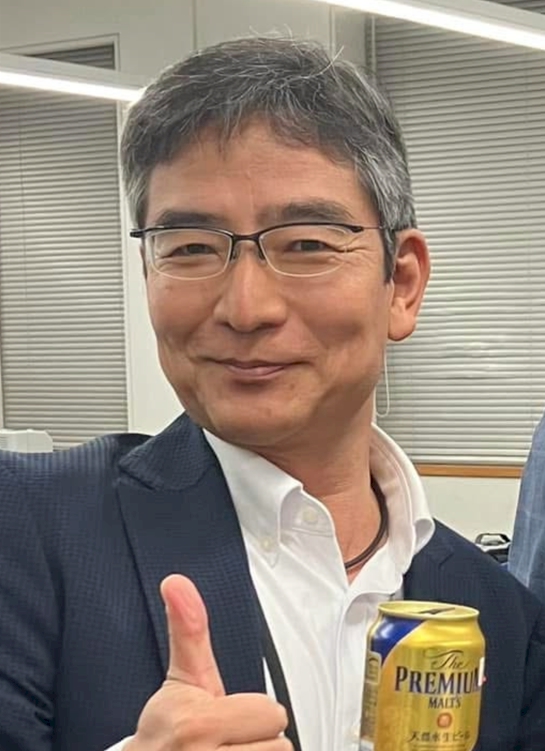
Professor, Kyoto University, Japan
Z-scheme Water Splitting Systems using Prussian Blue Analogues as Effective Surface Modifiers on Semiconductor Photocatalystsz
The Z-scheme-type water splitting (Zs-WS) systems, consisiting of two different photocatalysts and an electron mediator, are effective for harvesting visible light. However, the success has often depended on the affinity between photocatalyst surfaces and electron mediator. This drawback is typified by the limited choice of efficient H2 evolution photocatalysts (HEPs) (e.g., Rh-doped SrTiO3) for Zs-WS using Fe3+/Fe2+ redox couple. The majority of visible light-responsive materials shows quite low activity for H2 production with Fe2+ despite having suitable band levels, probably due to the absence of an effective site for oxidizing Fe2+. Herein, an effective strategy for overcoming this issue is demonstrated: activation of originally inactive materials via modification with metal hexacyanoferrate (MHCF) nanoparticles. MHCFs are a class of 3D coordination polymers, where M and Fe cations are bridged by cyanide ligands. The surface modification of RCO/TaON (RCO represent Rh-Cr mixed oxide) with InHCF nanoparticles triggered the H2 evolution under visible light in the presence of Fe2+. Various characterization revealed that the InHCF promotes Fe2+ oxidation to Fe3+ in the solution utilizing the holes photogenerated in TaON via FeIII/FeII redox cycles in InHCF. The InHCF modifier eventually enables Zs-WS with the Fe3+/Fe2+ redox mediator coupled with an O2 evolution photocatalyst under visible light. It is also disclosed that InHCF function as a solid electron mediators for achieving interparticle Zs-WS even in the absence of redox mediator dissolved in the aqueous solution. The redox potential of FeIII/FeII cycles in MHCFs changes based on M cations, implying a possibility of improving the efficiency via tuning the redox potential tailored for the band levels of photocatalysts. We successfully controlled the H2 evolution rates on a TaON by using different MHCF modifier , testifying the effectiveness of potential control for improving the efficiency of Zs-WS systems.
Website: Ryu Abe
Julio Lloret
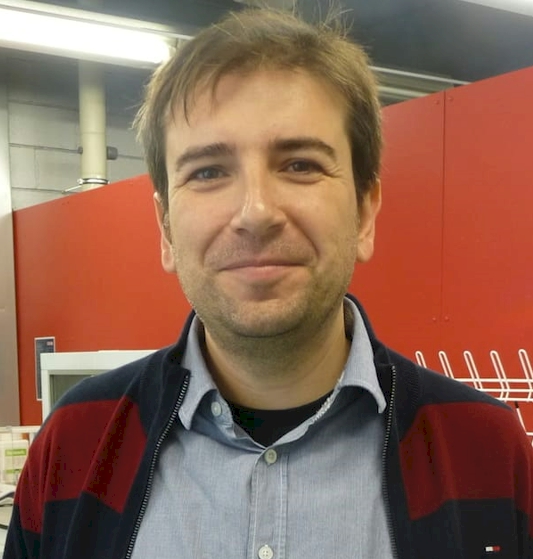
Professor, ICIQ (Institut Catala d'Investigacio Quimica), Spain
Metal Coordination Catalysts Tailored for LowConcentration CO₂ Reduction
Inspired by natural photosynthesis, there is a vision to synthesize fuels and chemicals using Earth's basic elements (such as H2O, CO2, N2) and renewable energy. Natural photosynthesis can operate at less than 420 ppm CO2, the current average CO2 concentration. In contrast, no synthetic catalyst has achieved this efficiency. On the other hand, industrial decarbonization demands catalytic systems that operate not only under CO₂saturated conditions but also at fluegas (3–15 %) and why not even at atmospheric (≈ 420 ppm) levels.[1]
We will discuss how by mechanistic understanding we hypothesize the possibility of CO2 reduction, even a very low concentration. On the other hand, our studies in this area have provided new insights into the processes and led to the discovery of novel reactivities,[2] tailoring the selectivity from CO to HCO2- in water, and ever obtaining HCO2H under acidic conditions. The presentation will focus on a catalyst for selective CO₂ reduction across this concentration spectrum. Under anhydrous conditions, the Mn(I) bisNheterocycliccarbene complex reaches TOFₘₐₓ = 3.5 × 10³ s⁻¹ at 1 bar CO₂ and maintains > 90 % Faradaic efficiency at 0.2 % CO₂ and at 420 ppm of CO₂ maintains 39 % Faradaic efficiency. The catalyst concentration is firstorder kinetics, enabled by extreme σbasicity of the Mn–C bond that outcompetes protonation.[2] These results establish molecular coordination environments as tunable handles for matching catalyst reactivity to the masstransport realities of dilute CO₂ streams and outline design rules for nextgeneration of catalysts.
REFERENCES
[1] B) Franco, F.; Fernández, S.; Lloret-Fillol, J. Curr. Opin. Electrochem. 2019, 15, 109– 117.
[2] A) Franco, F.; Pinto, M. F.; Royo, B.; Lloret-Fillol, J. A Angew. Chem., Int. Ed. 2018, 57, 4603– 4606. B) Fernández, S.;Franco F.; Martínez Belmonte, M.; Friães, S.; Royo, B.; Luis, J. M.; Lloret-Fillol, J. ACS Catal. 2023, 13, 10375–10385.
Website: Julio Lloret
Marc Robert
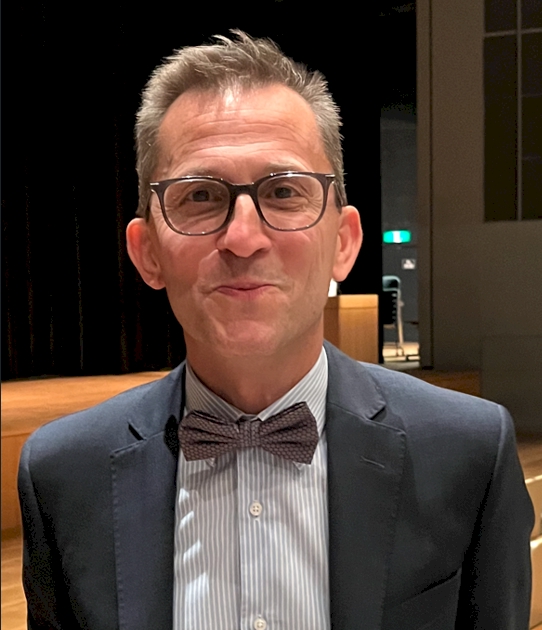
Professor of Chemistry - Sorbonne Université
Innovation Chair & Senior Member - University Institute of France (IUF)
Molecular Catalytic Reduction of CO2. From all C1 products to complex molecules
Reduction of carbon dioxide has as main objective the production of useful chemicals and fuels - renewable fuels - in which solar energy would be stored. Molecular catalysts can be employed to reach this goal, either in photochemical or electrochemical (or combined) contexts. Such molecular catalysts may be tuned for generating all C1 products, including CO, formate, formaldehyde, methanol and methane, (1-5) but also C2+ products (6) and even more complex molecules (7-8). In this lecture, we will describe our latest results regarding the synthesis of multi C-C bonds compounds.(7)
References
[1] J. Bonin, M. Robert et al. Nature 2017, 548, 74
[2] C. Berlinguette, M. Robert et al. Science 2019, 365, 367
[3] T. F. Jaramillo, M. Robert et al. Angew. Chem. Int. Ed. 2019, 58, 16172
[4] M. Robert, B. Liu et al. Nat. Commun. 2023, 14, 3401
[5] M. Robert et al. J. Am. Chem. Soc. 2024, 146, 22129
[6] M. Robert, M. Abdinejad, T. Burdyny et al., Nat. Catal. 2024, 7, 1109
[7] M. Robert et al., submitted.
[8] S. Zhao, M. Robert, submitted.
Website: Marc Robert
Akihiko Kudo
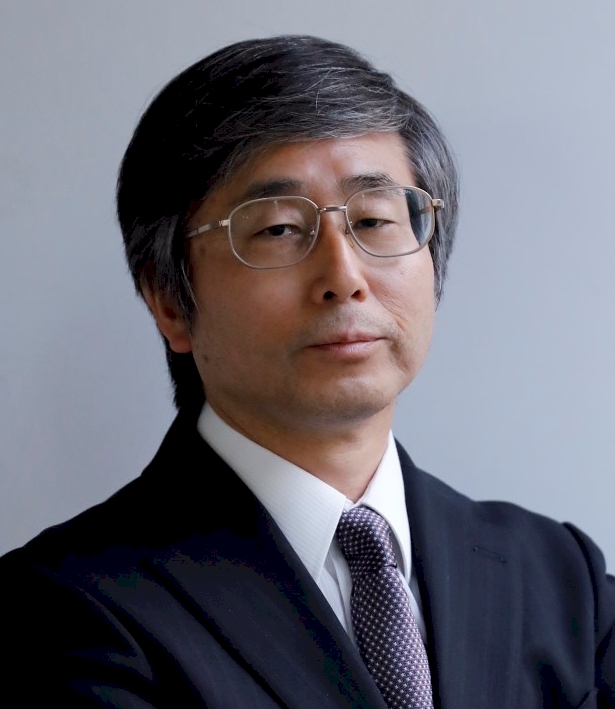
Professor, Tokyo University of Science, Japan
Water splitting and CO2 reduction using powdered photocatalysis as artificial photosynthesis
Photocatalytic water splitting and CO2 reduction are promising reactions to solve resources, energy, and environment issues, and achievement of carbon neutrality. These reactions are regarded as artificial photosynthesis, because light energy is converted to storable chemical energy [1]. In the present paper, various metal oxide and sulfide photocatalysts for water splitting and CO2 reduction using water as an electron donor are introduced and discussed.
It is a challenging topic to develop photocatalysts responding to light with long wavelength. After surveying various materials, we found that Ir-doped SrTiO3 showed the activity for water splitting up to 600 nm of visible light as a single particulate photocatalyst [2]. The photocatalyst was developed by transition metal doping into wide bandgap photocatalyst of a strategy. It is also important to use water as an electron donor for photocatalytic CO2 reduction [3]. Ag cocatalyst-loaded NaTaO3:Ba with 4.1 eV of band gaps gave ca. 90% of the selectivity for CO formation by the CO2 reduction in an aqueous medium without any sacrificial reagents [4]. CO was the main reduction product rather than H2 even in an aqueous medium. When Rh-Ru cocatalyst was used instead of Ag, CH4 was formed with ca. 10% of the selectivity [5]. Thus, an uphill reaction of CO2 reduction accompanied with water oxidation was achieved using the Ag- and Rh-Ru-loaded metal oxide photocatalysts.
References
[1] A. Kudo and Y. Miseki, Chem. Soc. Rev., 2009, 38, 253.
[2] K. Kaiya, Y. Ueki, H. Kawamoto, K. Watanabe, S. Yoshino, Y. Yamaguchi, A. Kudo, Chem. Sci., 2024, 15, 16025.
[3] S. Yoshino, T. Takayama, Y. Yamaguchi, A. Iwase, A. Kudo, Acc. Chem. Res., 2022, 55, 966.
[4] H. Nakanishi, K. Iizuka, T. Takayama, A. Iwase, and A. Kudo, ChemSusChem, 2017, 10, 112.
[5] W. Soontornchaiyakul, S. Yoshino, T. Kanazawa, R. Haruki, D. Fan, S. Nozawa, Y. Yamaguchi, A. Kudo, J. Am. Chem. Soc., 2023, 145, 20485.
Website: Akihiko Kudo

















